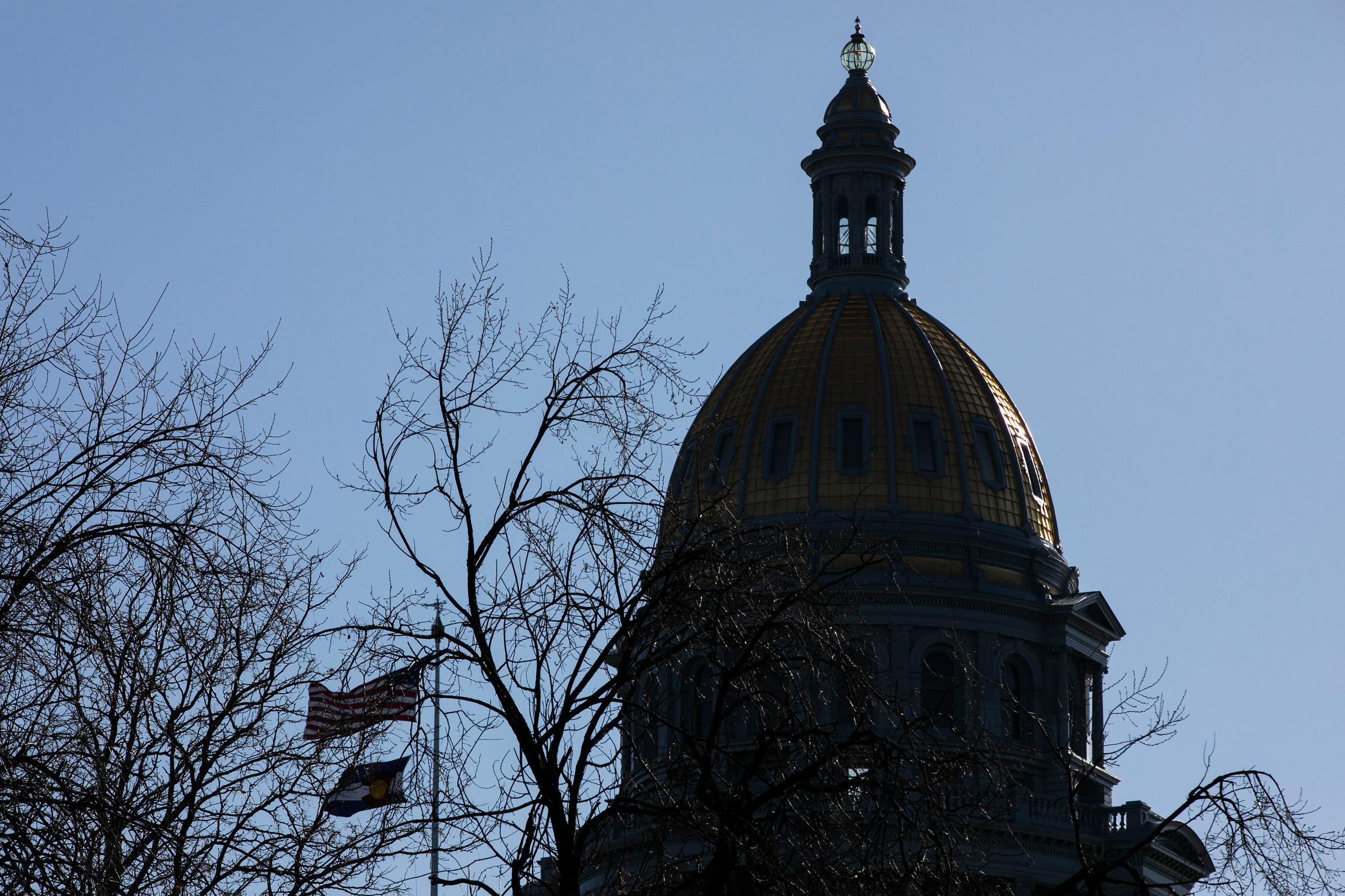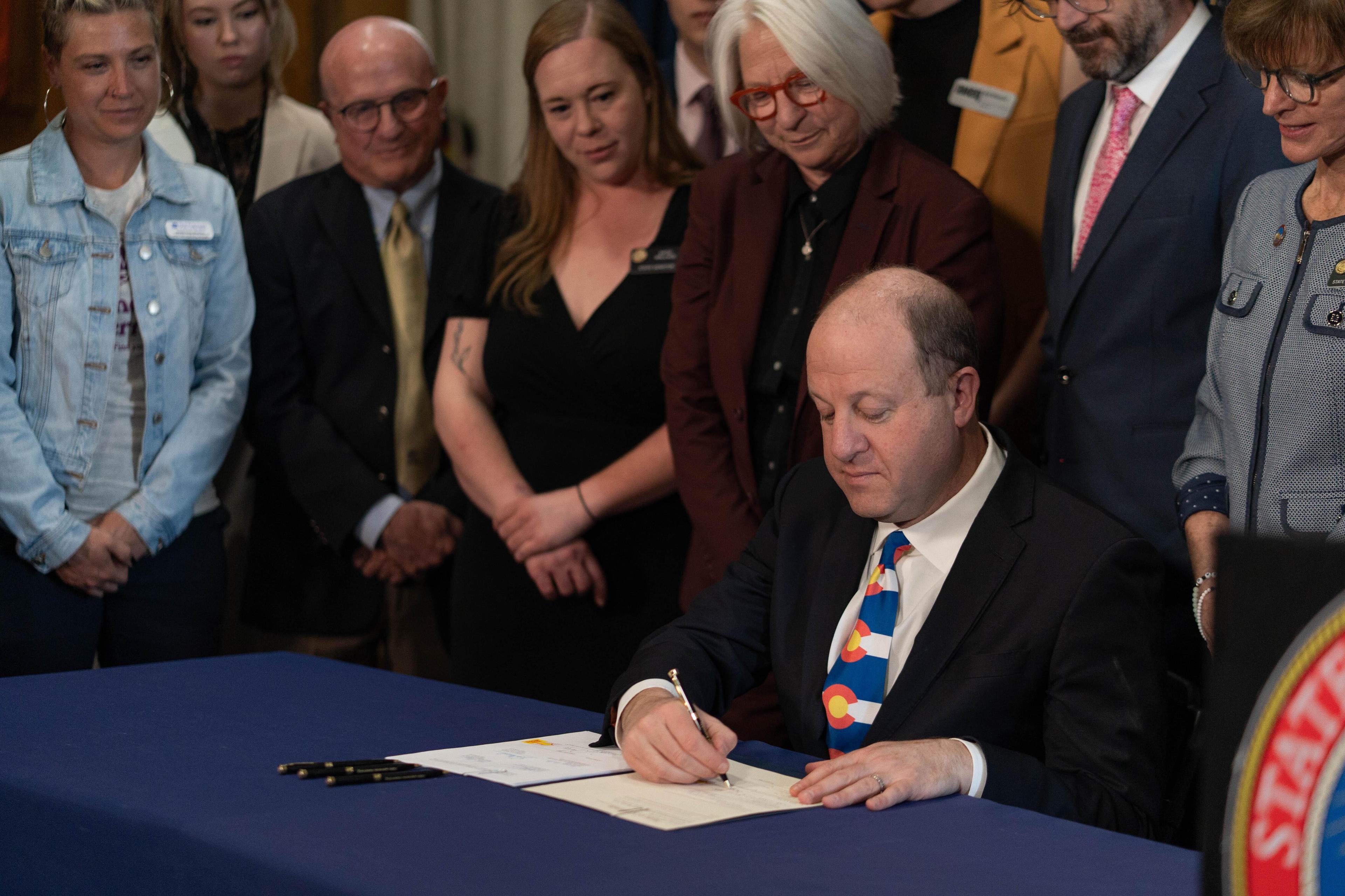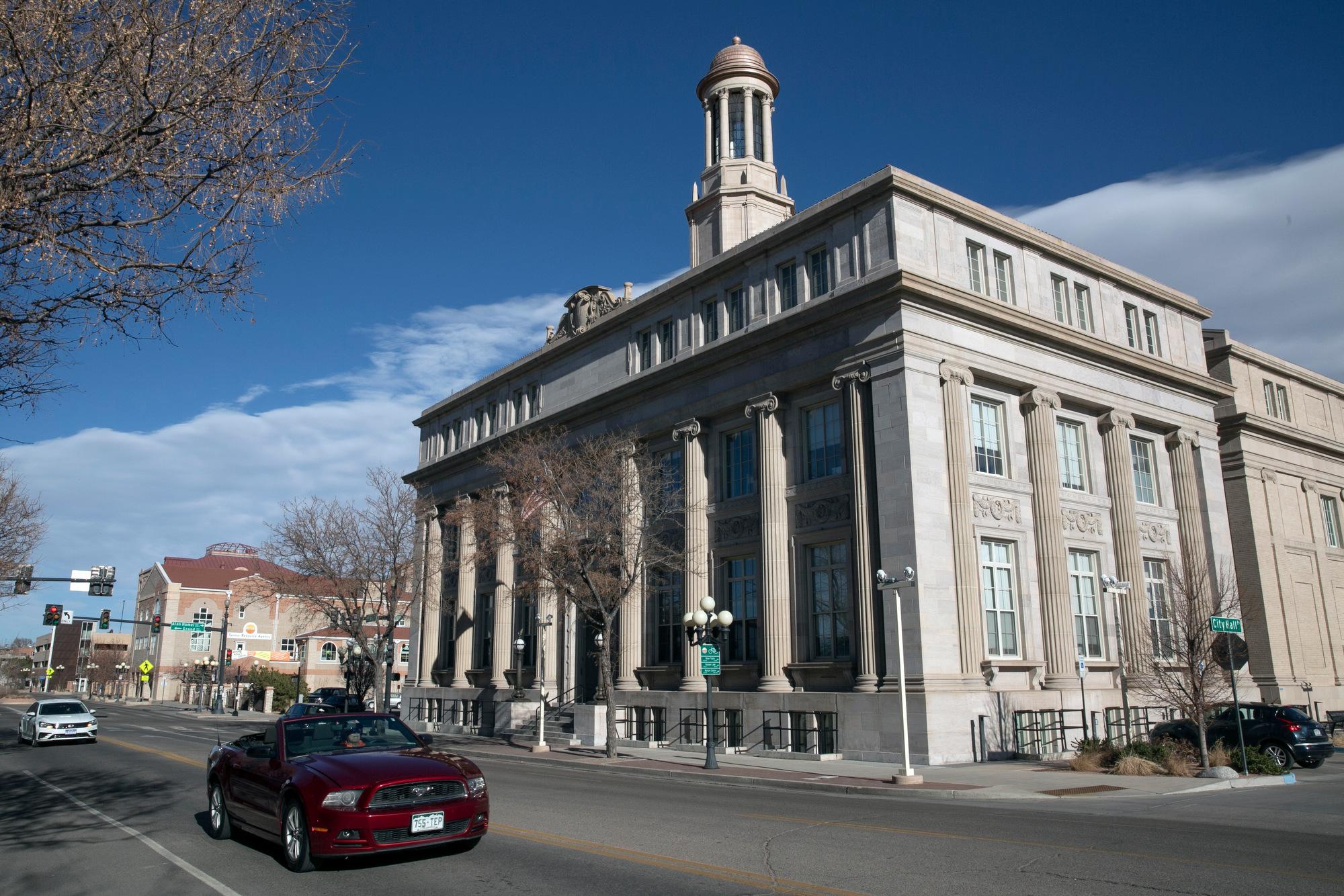
Democratic State Sen. Rachel Zenzinger paused in her car, staring at the grey stone of the Legislative Services Building in downtown Denver before another all-day meeting on Thursday.
She and the rest of the Joint Budget Committee had been at it for three days already, the grim business of looking at proposals for cutting the state’s budget. Today would be especially hard as they debated school funding.
“It’s exhausting,” she said, emotion seeping into her voice during a telephone interview. “I'm a teacher, I'm an educator, and today I'm going to have to cut programs in order to maintain base funding.”
“We kind of have to cut off some fingers here to save the hand. So it’s going to be really tough.”
Two months after Colorado's first confirmed case of COVID-19, the state government’s finances are rapidly spiraling into “worst nightmare” territory. With tax collections delayed, and economic recovery not yet on the horizon, the state's general fund — the pot of discretionary money that lawmakers and the governor control — is likely to take a huge hit.
The details came into focus a week back when the select group of legislators on the powerful JBC started to debate how to rewrite the next budget.
They may need to cut up to $3 billion of existing spending, about a quarter of existing general fund. They’ll remove hundreds of new spending proposals that had been drafted before the pandemic. For comparison, the state’s general fund declined by about $1 billion during the Great Recession.
On Tuesday, the state’s nonpartisan economic forecasters will give the committee an exact budget target.
The committee will present its budget to the rest of the General Assembly on May 26 when lawmakers return to the state capitol. Passing a balanced budget is the only thing the state legislature is constitutionally required to do, and the committee’s recommendations will serve as a starting point before the measure moves on to the full legislature.
To do their work, the six JBC lawmakers have spent their days sitting spaced well apart and mostly wearing masks in a committee hearing room across from the state capitol. They face rows of empty audience chairs while colleagues join by phone. Each day’s hearings involved a cascade of difficult discussions, as the staff has gone line by line through proposed cuts.
K-12 education and health care make up the largest parts of the state budget and will see a variety of programs either suspended or canceled.
After all their work in the previous week, the JBC approved only about $700 million in cuts, less than a third of what may be needed. In a message to her constituents, Zenzinger said the committee will wait until after state economists present the next revenue forecast before they talk about even more painful cuts.
Colorado’s budget will get some help from the federal CARES Act money set aside to aid state and local governments hurt by plummeting tax revenues. Legislative staff anticipates $1.68 billion will go to the state, although small local governments are lobbying that much of that should be passed on to them.
Any stimulus money the state holds onto for itself comes with a big limitation: it cannot be used to backfill the overall budget shortfall and must go instead to covering direct expenses as a result of COVID-19. Some JBC members would like more flexibility in the next federal stimulus to use the money to replace lost revenue.
Lawmakers are still figuring out how those federal dollars will fit into the larger picture. That uncertainty contributed to Democratic leaders’ decision to push the legislative start date to later in May.
Here’s some of what’s already on the table to balance the budget:
Education
Funding for K-12 schools comprises more than a third of the state’s budget, making it a clear target for significant cuts, even though both Republican and Democratic lawmakers have said they will only reduce per-pupil funding as a last resort.
The lowest hanging fruit are cuts to new and recent grants and programs. The JBC agreed on the following savings:
- Reduce money for K-12 school construction projects - $25 million
- Reduce the Quality Teacher Recruitment program - $1 million
- Delay a K-5 social and emotional health pilot program - $2.5 million
- Reduce a computer science education grant for underrepresented students - $700,000
- Eliminate a ninth-grade success program - $800,000
- Repeal the College Kickstarter Program, a college investment matching program that only began this year. The governor’s office objected to this proposal.
- Cut the workforce diploma pilot program in half - $500,000
- Eliminate local grants for schools that adopt accountability systems - $500,000
- Reduce school leadership pilot - $200,000
These cuts are only a fraction of what schools are likely to lose next year. Districts are starting to prepare for a reality that could include the elimination of non-mandated programs, school consolidation, and pay cuts and furloughs — if not outright teacher layoffs. Jefferson County schools, one of the state’s largest districts, is considering going to a four-day week if the situation becomes dire enough.
The state will receive some support for schools from the federal government, although lawmakers say it’s not nearly enough money to offset the coming cuts.
The Congressional Research Service estimates Colorado K-12 schools will receive $121 million from the $30 billion Education Stabilization Fund, to spend on online learning, sanitizing schools and long-term school closure planning. CRS also estimates Colorado will receive $167 million from the Higher Education Emergency Relief Fund. Additionally, Colorado should get about $44 million through the Education Department’s Governor’s Emergency Education Relief Fund.
Capital construction
State infrastructure projects are one place where budget committee members are looking to save some real money, up to $223 million. The state provides funding to maintain state buildings, renovate structures, purchase lands and buildings, and help colleges and universities with new construction projects.
The budget committee voted on about 70 percent of those proposed cuts, but with some trepidation. Many large projects require multiple years of funding and are only midway through their first phases.
The votes made for difficult listening for Democratic Rep. Dylan Roberts, vice-chair of the Capital Development Committee. He tuned in remotely, concerned about delaying basic maintenance, repairs, and updates to state buildings.
“You're going to be cutting projects that are classified as Level One [the highest priority] for a reason. It’s because they are pretty critical and if they go ... another year without funding, they could end up in that emergency category,” Roberts said.
Health care
The JBC considered, but ultimately rejected, cutting the state’s new reinsurance program, a central achievement of Gov. Jared Polis’ first year in office. The program pays for portions of the most expensive insurance claims from individual plans, taking the burden off insurers and lowering costs to consumers.
Shuttering the program would have saved $60 million for the general fund. Staff noted that it primarily benefits people in middle-income brackets.
Rep. Julie McCluskie, a Democrat, and Sen. Bob Rankin, a Republican, defended the law.
“I think, during a pandemic, making sure people have access to healthcare is so absolutely critical,” McCluskie said. Rankin said the cut would disproportionately hurt people on the Western Slope, where health insurance costs are higher.
In other places, the committee looked for compromises. Budget writers decided to hold Medicaid provider rates flat across the board, eliminating a proposed increase but did not approve rate reductions beyond that.
The federal government is helping by increasing its share of Medicaid funding. That’s estimated to save Colorado $176 million in the current budget year and up to $351 million in the upcoming fiscal year, depending on how long the disaster emergency lasts. But lawmakers had questions about just how that money would be distributed.
“There is federal money, but it doesn't necessarily hit across the board within sectors either. So the impact to some of our smaller rural hospitals, however, is different than the impact in some of the urban ones,” said Zenzinger. “They have different challenges for different reasons.”
Zenzinger said she will be watching to make sure rural hospitals don’t miss out on money they’re due under the expansion.
Budget staff suggested the state might also find savings in services for people with intellectual and developmental disabilities or health coverage for children in low-income families. The committee rejected both those proposals, for now.
Meanwhile, nonprofits and service providers that rely on state grants are bracing for their own cuts. JBC staff have suggested using the state’s marijuana and tobacco-related revenues to pay for general expenses, which could reduce what’s available for health programs and other services.
“Those are the programs that are easier to cut because it doesn't seem like they're directly saving lives. But the fact that they’re going to get cut now is just going to make the need so much greater in the future,” said Noah Sosin, director of coalition development for Lake County Build a Generation.
He worries the organization could lose half the money it uses for affordable housing, community organizing and substance abuse prevention programs.
Transportation
Most of the state’s transportation budget does not come from the state’s general fund, but committee staff recommended suspending a $50 million dollar transfer to help pay down some of the Transportation Department’s long-term debt obligations.
Cutting that transfer would force CDOT to use more of its own budget to cover its debt obligations, instead of putting that money into maintenance and construction.
Republican Rep. Kim Ransom worried that could harm other transportation priorities, but acknowledged it’s likely not a cut she can prevent. “I know that I’m going to get a lot of pushback,” she said.
CDOT officials indicated they could take the hit, according to Zenzinger.
Tourism
Even relatively small budget cuts can force tough choices for state lawmakers. One example: tourism promotion. Nonpartisan budget committee staff recommended cutting nearly all funding for the Colorado Tourism Office.
It’s a tiny fraction of the overall general fund but the proposal led the committee to question whether it would have a disproportionate effect on the state's future competitiveness as a tourism destination.
“It's marketing for the late fall and next winter’s seasons,” said Republican Sen. Bob Rankin of Carbondale, whose mountain district relies heavily on tourism.
“If our tourism industry doesn't start to come back in that timeframe, we're in very, very serious trouble,” he added. “So this marketing to attract people to the state is absolutely critical. And it doesn't happen if you don't do the outreach.”
Democratic Rep. Julie McCluskie of Dillon agreed with Rankin that it may be inadvisable to give up a few dollars with so much potential economic impact.
“Seventy percent of the jobs in the high country, in our rural resort communities, are tourism related and trying to get those jobs back will be critical as an economic driver. Tourism is at the heart of what Colorado is all about.”
But others on the committee questioned whether marketing the state was the best use of funds right now.
“I just don't know if we have a clear picture nationally of when people are going to be able to start traveling again, and when we're looking at cutting the things that we are going to be cutting so deep and so hard in this budget, I'm just nervous,” said Democratic Rep. Daneya Esgar of Pueblo, the committee’s chair.
Ultimately the governor’s office came back with another proposal for a less draconian reduction to the office's budget, saving $7.5 million.
State employees
The budget committee has agreed to eliminate a 3 percent pay raise for state employees, saving $72 million.
For now, the committee hopes to keep funding employee pensions at the normal level. Sen. Rankin got his colleagues to put off a decision on whether to scale back its $225 million annual contributions to the pension plan.
Budget committee chair Esgar said she understands that public employees are a big cost driver for the state, but she’s wary of balancing the budget “on the backs” of state workers.
“I just want to remind all of us that state employees are actually on the front lines right now during this health pandemic and working every single day to keep Colorado safe and we need to keep that in mind when we're finding our options and figuring out ways to cut this budget.”








